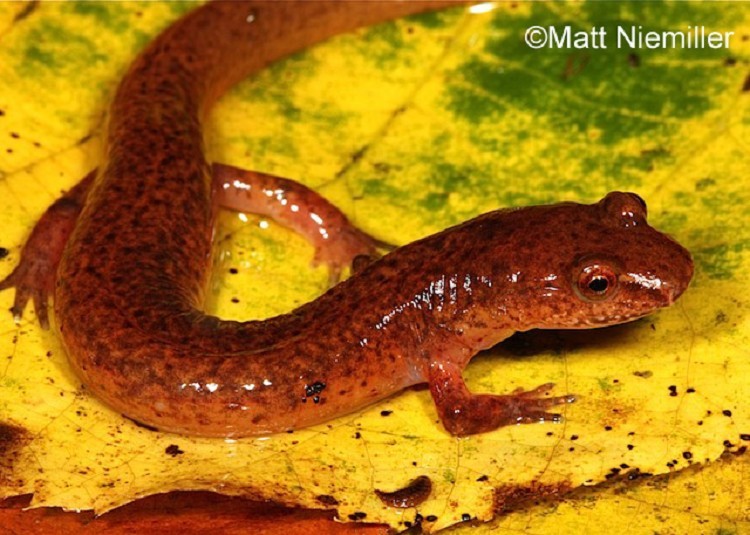Spring Salamander
Gyrinophilus porphyriticusThe Spring Salamander is primarily found in the eastern half of TN. Three subspecies occur in the state: Blue Ridge Spring (G. p. danielsi), Kentucky Spring (G. p. duryi), and Northern Spring (G. p. porphyriticus).
Description: A large (4.3 to 8.2 inches in length), a stout-bodied salamander with a salmon to an orangish-pink body covered in small black spots or flecks. A distinct ridge usually bordered with a light line, and sometimes shadowed by a dark line beneath it, extends from the eye to the nostril. The tail is moderately keeled.
Similar Species: Red and Mud Salamanders do not have the light-lined ridge running from eye to nostril.
Habitat: Found in small streams, springs, seeps, and caves that occur in moist hardwood forests, from low to high elevations.
Diet: Highly predatory on other salamanders (as well as other Spring Salamanders); also preys on a variety of invertebrates.
Breeding information: Adults breed during the winter and spring along the sides of streams. Females lay an average of 40-60 eggs under rocks in small streams during the summer. Females brood clutches until embryos hatch in late summer or autumn. The larval stage can last from 3-5 years.
Status in Tennessee: Population levels appear to be stable. Spring Salamanders are reasonably common in the Great Smoky Mountains National Park.
Fun Facts:
- Canthus rostralis is the name of the ridge running from the eye to the nostril. Possibly acts as a “gun-sight” in helping locate and focus on prey.
Best places to see in Tennessee: Small streams and springs in the Great Smoky Mountains.
